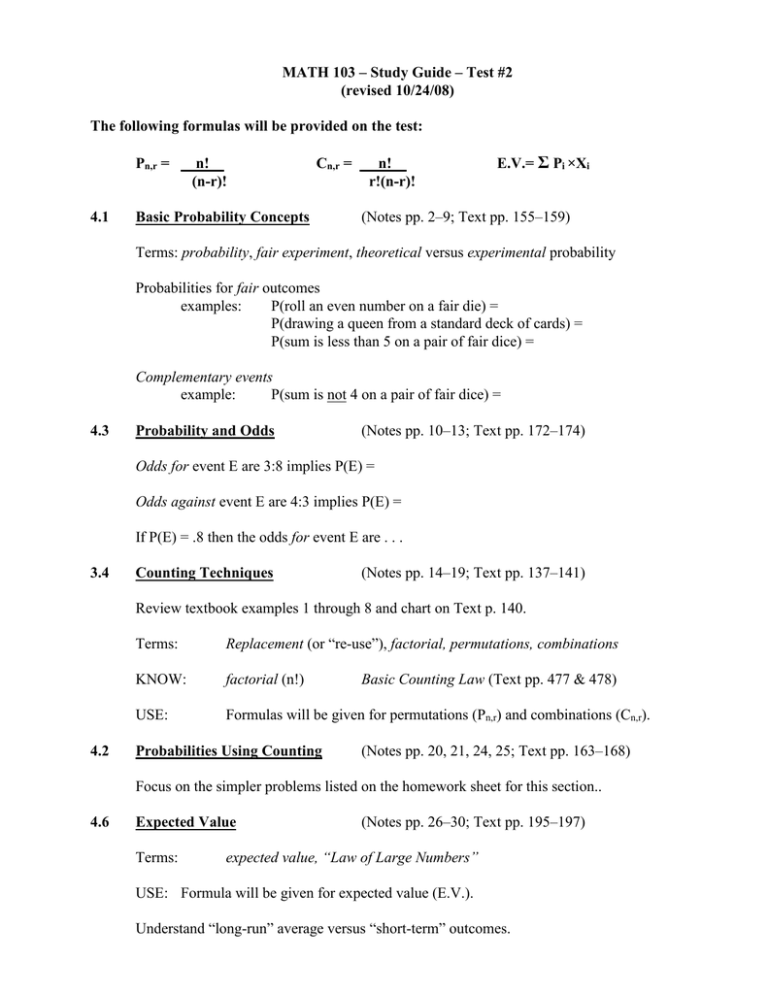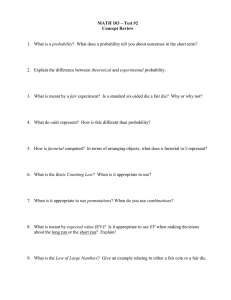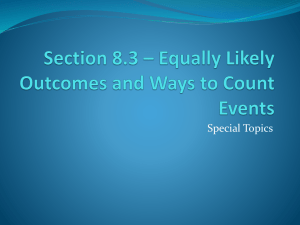MATH 103 – Study Guide – Test #2 (revised 10/24/08)
advertisement

MATH 103 – Study Guide – Test #2 (revised 10/24/08) The following formulas will be provided on the test: Pn,r = 4.1 n! (n-r)! Cn,r = Basic Probability Concepts n! r!(n-r)! E.V.= Σ Pi ×Xi (Notes pp. 2–9; Text pp. 155–159) Terms: probability, fair experiment, theoretical versus experimental probability Probabilities for fair outcomes examples: P(roll an even number on a fair die) = P(drawing a queen from a standard deck of cards) = P(sum is less than 5 on a pair of fair dice) = Complementary events example: P(sum is not 4 on a pair of fair dice) = 4.3 Probability and Odds (Notes pp. 10–13; Text pp. 172–174) Odds for event E are 3:8 implies P(E) = Odds against event E are 4:3 implies P(E) = If P(E) = .8 then the odds for event E are . . . 3.4 Counting Techniques (Notes pp. 14–19; Text pp. 137–141) Review textbook examples 1 through 8 and chart on Text p. 140. 4.2 Terms: Replacement (or “re-use”), factorial, permutations, combinations KNOW: factorial (n!) USE: Formulas will be given for permutations (Pn,r) and combinations (Cn,r). Probabilities Using Counting Basic Counting Law (Text pp. 477 & 478) (Notes pp. 20, 21, 24, 25; Text pp. 163–168) Focus on the simpler problems listed on the homework sheet for this section.. 4.6 Expected Value Terms: (Notes pp. 26–30; Text pp. 195–197) expected value, “Law of Large Numbers” USE: Formula will be given for expected value (E.V.). Understand “long-run” average versus “short-term” outcomes.




